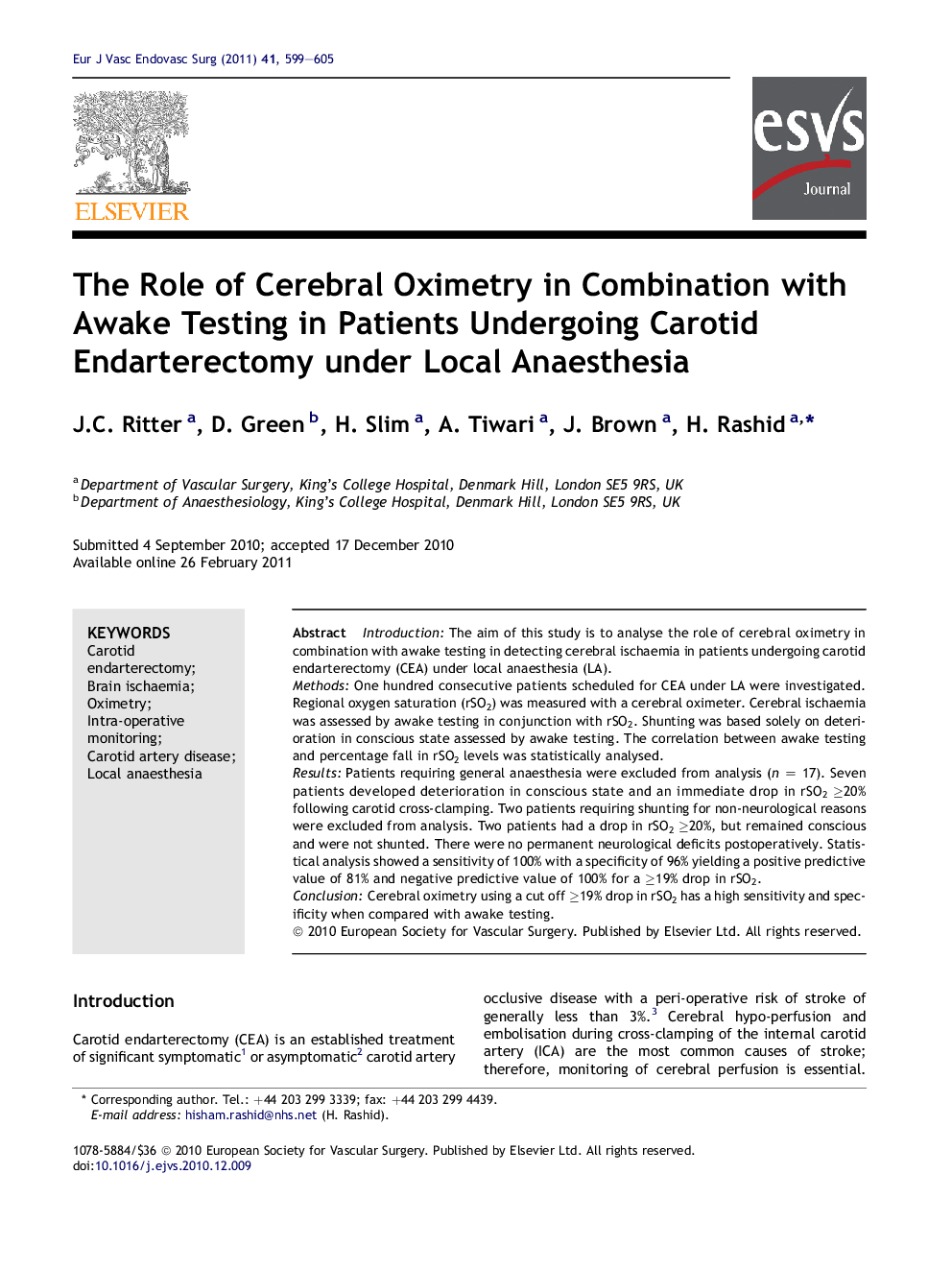| Article ID | Journal | Published Year | Pages | File Type |
|---|---|---|---|---|
| 2913412 | European Journal of Vascular and Endovascular Surgery | 2011 | 7 Pages |
IntroductionThe aim of this study is to analyse the role of cerebral oximetry in combination with awake testing in detecting cerebral ischaemia in patients undergoing carotid endarterectomy (CEA) under local anaesthesia (LA).MethodsOne hundred consecutive patients scheduled for CEA under LA were investigated. Regional oxygen saturation (rSO2) was measured with a cerebral oximeter. Cerebral ischaemia was assessed by awake testing in conjunction with rSO2. Shunting was based solely on deterioration in conscious state assessed by awake testing. The correlation between awake testing and percentage fall in rSO2 levels was statistically analysed.ResultsPatients requiring general anaesthesia were excluded from analysis (n = 17). Seven patients developed deterioration in conscious state and an immediate drop in rSO2 ≥20% following carotid cross-clamping. Two patients requiring shunting for non-neurological reasons were excluded from analysis. Two patients had a drop in rSO2 ≥20%, but remained conscious and were not shunted. There were no permanent neurological deficits postoperatively. Statistical analysis showed a sensitivity of 100% with a specificity of 96% yielding a positive predictive value of 81% and negative predictive value of 100% for a ≥19% drop in rSO2.ConclusionCerebral oximetry using a cut off ≥19% drop in rSO2 has a high sensitivity and specificity when compared with awake testing.
